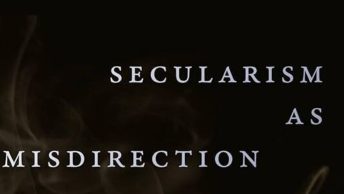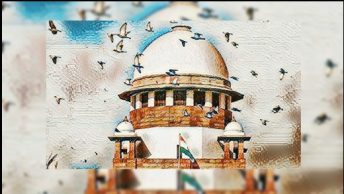[Ed Note: As part of our New Scholarship Section, we have been inviting discussants to respond to specific articles. This Response Piece is part of a series of posts indexed here discussing the public law themed articles featured in the recently released Issue 1 of the 2020 Volume of the Indian Law Review. In this post, Krithika Ashok responds Tarunabh Khaitan’s “The Indian Supreme Court’s identity crisis: a constitutional court or a court of appeals?” Before this, Dr. Chowdhury responded to the same article here and Prof. Khaitan replied to the response here. Thanks to Krithika for accepting our invite to participate in this discussion! We are also extremely grateful to Prof. Khaitan for suggesting this idea of expanding the New Scholarship Section beyond introductions to public law scholarship by holding discussions such as this one.]
The Supreme Court of India (the court) has, in recent times, invited a great deal of criticism for its poorly reasoned, and often simply incoherent, decisions. There has therefore also been a corresponding effort within the legal academy to diagnose the more systemic problems that plague the court – and Professor Khaitan’s empirical study on the exercise of the appellate jurisdiction of the court is an important contribution on that front. He argues that the court overextends itself in the exercise of its Special Leave Petition (SLP) jurisdiction, by admitting more cases than it ought to, leaving itself unable to perform its role as a constitutional court. It has been of recurring concern that constitutional cases form only a small fraction of the docket of the court – and Professor Khaitan brings new data and new factors to bear upon our assessment of the role of the court. He focuses particularly on the reversal rate in SLP cases to argue that the court may be admitting more cases than it ought to; and importantly, considers the role that Senior Advocates may play in skewing the docket of the court in his article. I offer some thoughts on both arguments, while also reflecting on the avenues for empirical research thrown open by this important study.
Reversal rates
Professor Khaitan, in a sample of SLPs filed in 2001-2011, finds that 59.4 per cent of the SLPs that are admitted by the court for regular hearing are eventually reversed. He interprets this as a ‘low’ rate of reversal for an apex court; and argues that the admissibility standard of the court is far too lenient. One might independently hold the latter opinion, but I would suggest that there are limitations to the inferences that may be drawn based on the overall rate of reversal. I say this mainly because, while in trial courts or courts of first appeal, one might expect plaintiff/ appellant success rates to settle close to 50 per cent based on the Priest-Klein hypothesis, it is less clear what one should expect to see in a discretionary appellate court – particularly, in the highest court where the cases are presumably hard.
Further, contrary to what Professor Khaitan seems to suggest (p.14), one would in fact expect to see a relatively high reversal rate in an error-correction court, given that the only plausible reason for admission is eventual reversal. On the other hand, in an apex court that takes norm-elaboration seriously, one would expect to see somewhat lower reversal rates, because often cases would be taken up in appeal specifically to settle, elaborate or clarify the doctrine, rather merely reverse the outcome of the lower court. Of course, we may know (or at least believe) that to be untrue of the Indian court; but the point here is that low reversal rate does not, in and of itself, implicate the decision-making protocols of the court. In other words, a low reversal rate may as much be the symptom of an error-correction court with low admissibility standards as of a norm-elaboration court.
Moreover, assuming that court is indeed an error-correction court, there may still be good reasons for a relatively low reversal rate. For instance, in their paper in the ILR, Chandra, Hubbard and Kalantry argued that a lower reversal rate may be attributable to “favoured access” for the “underdogs” – and that, on the other hand, in cases where the government is the appellant, the reversal rate is close to 70 per cent (comparable therefore to the US Supreme Court). Therefore, contrary to Professor Khaitan’s conclusions, one might even argue that the court is in fact highly discerning – with different admission standards for different types of appellants (arguably based on the gravity of injustice they would face if denied appeal) – and an across-the-board decrease in admission rates may not be desirable. It would be worthwhile for future researchers to examine the variations in admissibility and reversal rates across different subject-matter types of SLPs and appellants; to identify the specific types of cases or appellants where the court is lax on admissibility with no corresponding benefit in terms of accessibility. This research would be particularly important given that it is not so much the SLP jurisdiction itself that produces the ‘identity crisis,’ but its overwhelming exercise in matters that do not raise any constitutional issue – otherwise, perhaps, more constitutional cases arrive at the court through the SLP mechanism than through its writ jurisdiction.
That said – assuming once again that the court is an error-correction one – the apparent benevolence of the court towards ‘weak’ appellants is unlikely to entirely explain the ‘low’ rate of reversal. Professor Khaitan argues that it is likely that the court overestimates the number of cases that require reconsideration; and points to two important reasons for this – the unpredictability in legal doctrine which potentially makes it difficult for admitting judges to predict the outcome in the cases before them, and the presence of Senior Advocates at the admission hearing. I discuss the latter in some detail in the following section, but on the former, I would add that this unpredictability is worsened by the average time (roughly four years) that it takes between when an SLP is admitted and finally decided. In that time, the character of the court may be very different given the relatively short tenure of judges and chief justices.
However, if legal unpredictability is in fact the primary explanation for the ‘low’ rate of reversal, the rate of reversal may not vary significantly even if admissibility rates are reduced – because the selection of cases for hearing is ultimately somewhat random. It may be worthwhile therefore for future work to examine whether the reversal rates vary over the period of study, given that the admission rates fluctuate between 8 and 35 per cent during this time. This would offer some initial insight into whether a lower admissibility rates is associated with higher reversal rates.
Role of Senior Advocates
In the study, significantly, Professor Khaitan finds that the presence of Senior Advocates (SAs) at the admission stage is strongly correlated with the SLP being admitted. It would have been tempting to suggest that the SAs exert an inordinate influence in the court or are of extraordinary talent – to explain this correlation – but counterintuitively, it is seen that admission rates are unusually high even where a SA is representing the respondent alone. He considers (and dismisses) the potential explanation that SAs may choose cases that are more likely to be admitted; and accordingly, concludes that the mere presence of SAs before the bench is related to admissibility. He does not suggest that there is necessarily a causal link between the presence of SAs and admissibility; but that it may only act as a predictor for the court. He does not however consider what exactly the presence of a SAs may signal/ predict, or act as proxy for, which then results in a higher admission rate. This is particularly important to consider, given his suggestion to bar the appearance of SAs at the admission stage.
I would think one explanation for this correlation is that the presence of a SA acts as a proxy for the high-stakes nature of the case (whether financial, political or social) for the admitting judges. It would also explain why there is a correlation between the presence of a SA on behalf of the respondent with admission – if the respondent (who won in the lower court) is willing to spend money to hire a SA at the admission stage itself, it may be a signal to the court that the stakes are high. Further, if both sides are represented by a SA, it would suggest that the stakes are even higher, which is why then that category of cases has the highest admission rates (42 per cent). If this is the case, it may not necessarily help to eliminate SA presence at the admission stage, because the court is likely to continue accounting for the stakes of the case in its admission decision. Worse, it may simply replace ‘SA presence’ with a different, and possibly even less efficient, proxy (like the nature and identity of the parties). In other words, it may not lead to an improvement in reversal rates. There is therefore a need for further research into why the presence of a SA correlates with higher admission rates.
This is particularly important given that, as Professor Khaitan points out, it has a grave impact on access to the court, particularly for vulnerable appellants. This is even borne out in this study (p.20); and Marc Galanter’s thesis on why the haves come out ahead (because they tend to be ‘repeat players’ in court) is brought to mind by the variations in admission rates with the identity of the parties. It is seen that repeat players like corporations and the state have more success against individuals at the admission stage than vice versa. This study therefore – and the further research that it is bound to inspire – are crucial as the debates on the appropriate role of the court proceed.






Prof. Khaitan’s reply to the post has been published at https://lawandotherthings.com/2020/08/a-reply-to-ms-ashok-by-prof-khaitan-regarding-his-ilr-paper/
Your article helped me a lot, is there any more related content? Thanks!
Thanks for sharing. I read many of your blog posts, cool, your blog is very good.